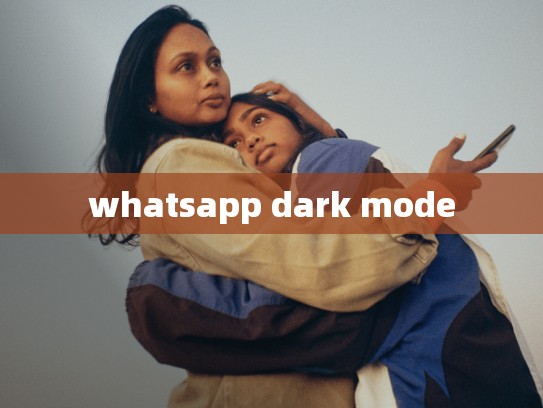WhatsApp Dark Mode: Navigating the New Era of Mobile Communication
Introduction to WhatsApp Dark Mode
In today's digital age, where communication has become more pervasive and instantaneous than ever before, mobile apps have evolved significantly to meet these demands. One such app that stands out is WhatsApp, which has been a cornerstone in personal and professional communications for years. Recently, WhatsApp introduced its "Dark Mode" feature, offering users a new way to enhance their browsing experience on both iOS and Android platforms.
This article delves into the details of WhatsApp's Dark Mode, exploring how it works, its benefits, and how it can be integrated into existing devices or used as an additional tool for enhanced privacy and aesthetics.
Understanding WhatsApp Dark Mode
What Is WhatsApp Dark Mode?
WhatsApp Dark Mode is essentially a visual customization option that changes the color scheme of the messaging application from light to dark. When activated, this mode alters various elements within the app, including the background, text colors, icons, and even the interface layout, making them all darker shades. This change not only enhances readability but also adds an aesthetic appeal to the user’s screen.
Key Features of WhatsApp Dark Mode:
-
Enhanced Visibility: The use of darker colors reduces glare and makes content easier to read, especially under bright conditions.
-
Customizable Settings: Users can adjust different settings individually, allowing for a tailored look based on personal preference.
-
Consistent Interface: Whether using light or dark mode, the overall design and functionality remain consistent across the app, ensuring a cohesive user experience.
How Does WhatsApp Dark Mode Work?
iOS Implementation:
On Apple devices running iOS 15 or later, turning on Dark Mode involves a simple tap. After enabling it, you’ll notice that everything on your phone transitions to a darker shade. For those who prefer a more traditional approach, you can set specific times during the day when Dark Mode should automatically activate, enhancing productivity while reducing eye strain.
Android Implementation:
For Android users, activating Dark Mode requires slightly more effort. Most modern versions of WhatsApp allow users to toggle between Light and Dark modes with just one click. However, some older models might require manual configuration through the device’s system settings menu. Once enabled, the entire interface will adopt a darker tone, providing a fresh perspective on everyday interactions.
Benefits of Using WhatsApp Dark Mode
Improved Readability:
The primary advantage of WhatsApp Dark Mode lies in improved readability. With lighter texts and backgrounds, messages appear clearer against the backdrop, reducing eye fatigue, especially important for long hours spent on the app. This enhancement is particularly beneficial for night owls or individuals dealing with computer vision syndrome.
Increased Privacy and Security:
By default, WhatsApp Dark Mode often includes increased privacy features. For instance, some themes may include less detailed information about the user’s profile and recent activities. Additionally, certain notifications may turn off, further protecting sensitive data from prying eyes.
Enhanced User Experience:
Beyond practical considerations like ease of reading, Dark Mode offers a visually appealing upgrade to the app’s interface. Many users find the darker theme refreshing and aesthetically pleasing, potentially boosting engagement levels if combined with other innovative features.
Integration with Existing Devices
Automatic Dark Mode Switchers:
For users looking to seamlessly integrate Dark Mode without having to manually switch every time, third-party tools or extensions come in handy. These add-ons usually provide a quick toggle button or integration with operating systems’ native Dark Mode functions. They can adapt the app’s appearance dynamically, adjusting to the current environment (e.g., ambient lighting), thus saving energy and increasing efficiency.
Manual Configuration:
For those seeking total control over their app’s appearance, manually configuring each app via system-wide settings or third-party applications remains the most precise method. These options give users the flexibility to choose exactly what they want from a wide array of available themes, ensuring a perfect balance of style and function.
Conclusion
With the introduction of Dark Mode, WhatsApp has expanded its reach beyond mere communication capabilities, introducing an element of personalization and convenience that aligns perfectly with the evolving needs of smartphone users. By offering customizable themes, the app now provides a richer, more adaptable ecosystem that adapts to individual preferences and environmental factors.
As we move forward, expect to see more innovations like this in our daily digital lives. The future of communication apps seems poised to embrace a wider range of customizables and personalized experiences, ultimately enriching the way we interact with technology.


